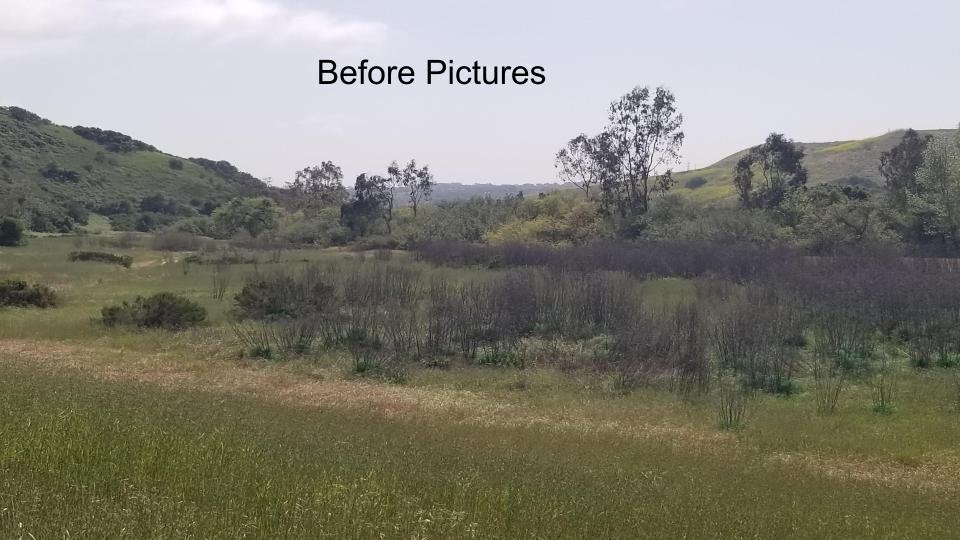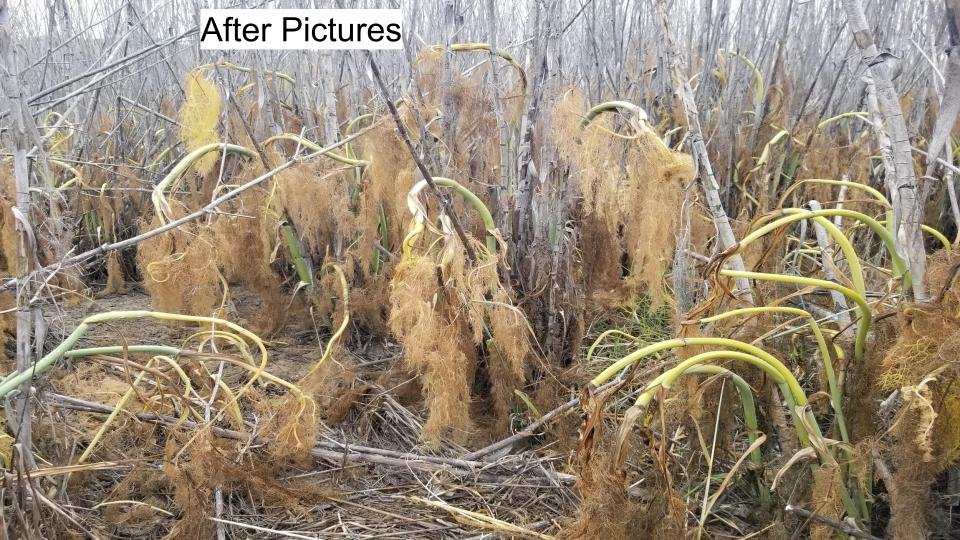Restoring Nesting Opportunities on Harrier Hill: Grant from POPs makes a difference
By Mike Kelly
Ten to twenty years ago we had Northern harriers, a.k.a. Marsh hawks (Circus cyaneus) nesting in two places in Peñasquitos Preserve. One place was a grassland slope up Lopez Canyon. The other was another grassland slope on the western end of the Preserve on the south side just east of where the trail entering the Preserve comes in from the parking-staging area. This nesting area was no secret. A sign identifying the nesting area asked people to stay off it. A historically permitted use for the slope was a beginner’s site for Paragliders to learn how to fly. The City withheld this permit to prevent disruption to this nesting site. The training shifted to “Little” Black “ (Black Mountain Park).
The Northern Harrier is a ground nester, usually in grasslands such as these or in marshes. It’s a true raptor, hunting on the fly. It glides slowly over grasslands and some other areas, very low to the ground and dropping on their prey. Unlike other raptors they often hunt by hearing. They hunt rodents, amphibians, reptiles, and other birds. When nesting, they prefer dense, but low grasslands or marshes. And that’s where our problem arises. Tall weeds, especially the perennial Sweet fennel (Foeniculum vulgare), Artichoke thistle or Cardoon (Cynara cardunculus), and the annual Black mustard (Brassica nigra) invaded these grasslands. They’re all tall, clump out into dense patches, and reduce the population of the shorter grass species. The Harriers stopped nesting here years ago.
The Friends and the City Parks Dept., at the suggestion of Senior Ranger Gina Washington, decided to develop this as a project. The fennel was not only a problem on Harrier Hill, but also in the adjacent grasslands hunting ground. A large “forest” of fennel stretched a quarter mile or so to the east. So, we developed the Fennel Forest Project to finance killing these invasives in both areas. We applied for and received a grant for about half the cost from the Protect our Preserves (POPs) foundation. The work was done in a timely fashion and looks great. Next year there will be a follow up grant to clean up the fennel. There will be resprouts and new seedlings to contend with, which is not unexpected.
A nice finding by Del Brooks who did the work was that there are some native species growing on the edges of the fennel forest, sometimes embedded therein. They included Yerba mansa (Anemopsis californica), California mugwort (Artemisia douglasiana), and Blue-eyed grass (Sisyrinchium Bellum). Next year the Friends will help expand these and other species.
Photos: Mike Kelly




